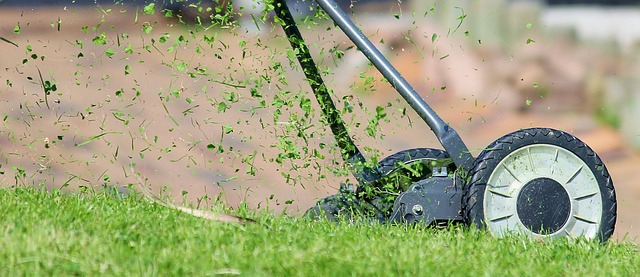How to Kill Grubs in Your Lawn: Identification, Treatment Options, and Prevention
Grubs are one of the most destructive lawn pests, capable of turning a lush green lawn into patchy, dying grass within weeks. These C-shaped larvae of various beetles feed on grassroots underground, making detection challenging until significant damage appears. Understanding how to identify, treat, and prevent grub infestations is essential for maintaining a healthy lawn year-round.

Grub infestations can devastate lawns quickly, but with proper knowledge and timely action, homeowners can effectively manage these destructive pests. These white, C-shaped larvae live beneath the soil surface, feeding on grass roots and organic matter, causing brown patches and weakened turf that pulls up easily.
Identify Grub Damage and Understand Their Lifecycle
Grub damage typically appears as irregular brown patches that feel spongy underfoot. The affected grass pulls up easily, revealing damaged or missing roots. Peak damage occurs during late summer and early fall when grubs are largest and most active. Adult beetles lay eggs in midsummer, which hatch into small grubs that feed through fall before overwintering deep in the soil. They resurface in spring to continue feeding before pupating into adult beetles.
To confirm grub presence, cut a square foot section of damaged turf and examine the soil. Five or fewer grubs per square foot rarely cause significant damage, while ten or more indicate a serious infestation requiring treatment.
Monitor Infestation Levels and Timing for Effective Control
Effective grub control depends heavily on proper timing and monitoring. The best treatment window occurs when grubs are young and actively feeding near the surface, typically from late July through early September. During this period, grubs are smaller and more susceptible to treatments.
Regular lawn inspection helps detect early signs of infestation. Look for increased bird or animal activity, as they often dig up lawns searching for grubs. Raccoons, skunks, and crows are particularly attracted to grub-infested areas. Additionally, monitor adult beetle activity during summer months, as heavy beetle populations often indicate potential grub problems.
Apply Cultural and Mechanical Measures to Reduce Grubs
Cultural practices significantly impact grub populations and lawn resilience. Maintaining proper soil moisture helps grass recover from minor grub damage while avoiding overwatering, which creates ideal conditions for egg-laying beetles. Deep, infrequent watering encourages deep root growth, making grass more tolerant of grub feeding.
Proper fertilization strengthens grass, helping it withstand grub damage. Avoid excessive nitrogen fertilization during peak egg-laying periods, as lush growth attracts egg-laying beetles. Aerating compacted soil improves root development and reduces stress on grass.
Mechanical control includes removing adult beetles by hand during their active period and using pheromone traps to monitor population levels. However, traps may attract more beetles to the area, so placement requires careful consideration.
Use Biological Controls (Beneficial Nematodes, Milky Spore)
Biological controls offer environmentally friendly grub management options. Beneficial nematodes (Heterorhabditis bacteriophora) are microscopic worms that parasitize grub larvae. They work best when applied to moist soil during warm weather when grubs are actively feeding near the surface.
Milky spore disease (Paenibacillus popilliae) specifically targets Japanese beetle grubs, providing long-term control once established in soil. This bacterial disease can persist for 15-20 years, gradually spreading throughout the treatment area. However, it requires 2-3 years to become fully effective and only controls Japanese beetle grubs, not other species.
Both biological controls require specific environmental conditions for success. Nematodes need consistent soil moisture and temperatures between 60-85°F, while milky spore works best in areas with established Japanese beetle populations.
| Treatment Method | Provider/Product | Cost Estimation | Application Timing |
|---|---|---|---|
| Beneficial Nematodes | Various suppliers | $30-50 per 5,000 sq ft | Late summer/early fall |
| Milky Spore | St. Gabriel Organics | $40-60 per 10,000 sq ft | Spring or fall |
| Chemical Grubicides | Bayer, Scotts, others | $25-45 per 5,000 sq ft | Preventive: early summer |
| Professional Treatment | Local lawn care services | $150-300 per treatment | Varies by region |
Prices, rates, or cost estimates mentioned in this article are based on the latest available information but may change over time. Independent research is advised before making financial decisions.
Choose and Apply Chemical Treatments Safely and Legally
Chemical grubicides fall into two categories: preventive and curative treatments. Preventive treatments containing imidacloprid, clothianidin, or thiamethoxam are applied in early summer before eggs hatch. These provide season-long protection but must be applied before grub establishment.
Curative treatments using trichlorfon or carbaryl target existing grub populations during their active feeding period in late summer. These products work quickly but require precise timing for maximum effectiveness. Always water treatments into the soil immediately after application to activate the ingredients.
When using chemical treatments, read and follow all label instructions carefully. Wear appropriate protective equipment and avoid application during windy conditions. Never apply treatments to flowering plants that attract pollinators, and consider potential impacts on beneficial insects and soil organisms.
Integrated pest management combining multiple approaches often provides the most effective long-term grub control. This strategy reduces reliance on chemical treatments while maintaining healthy, resilient turf that can better withstand pest pressure. Regular monitoring, proper cultural practices, and selective use of biological or chemical controls create a comprehensive grub management program tailored to specific lawn conditions and pest pressure levels.




